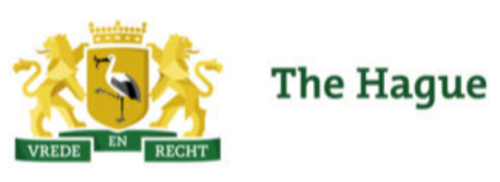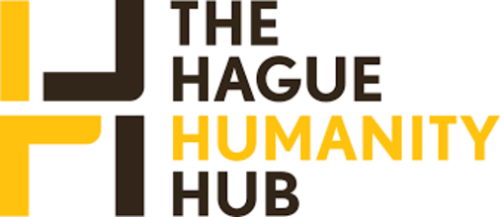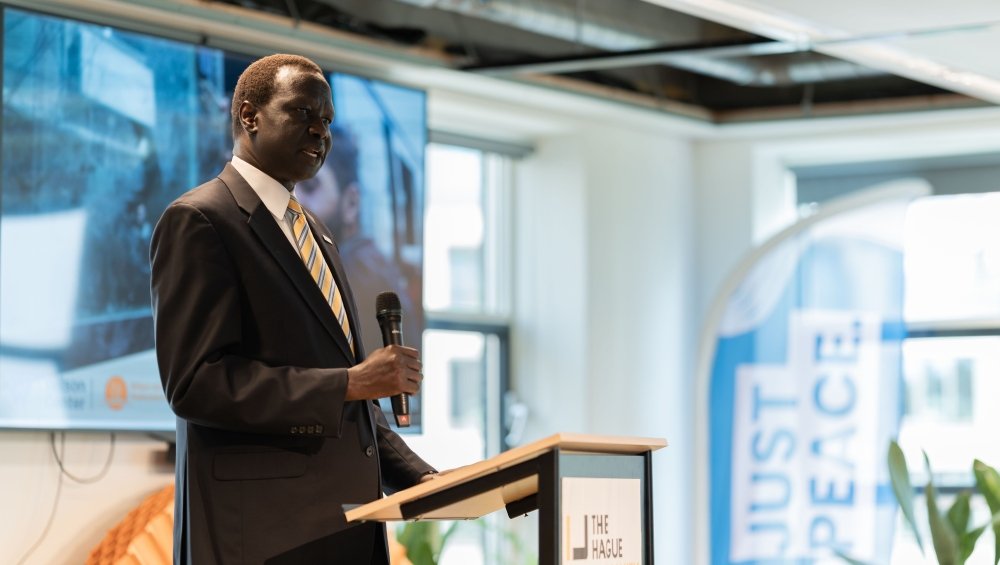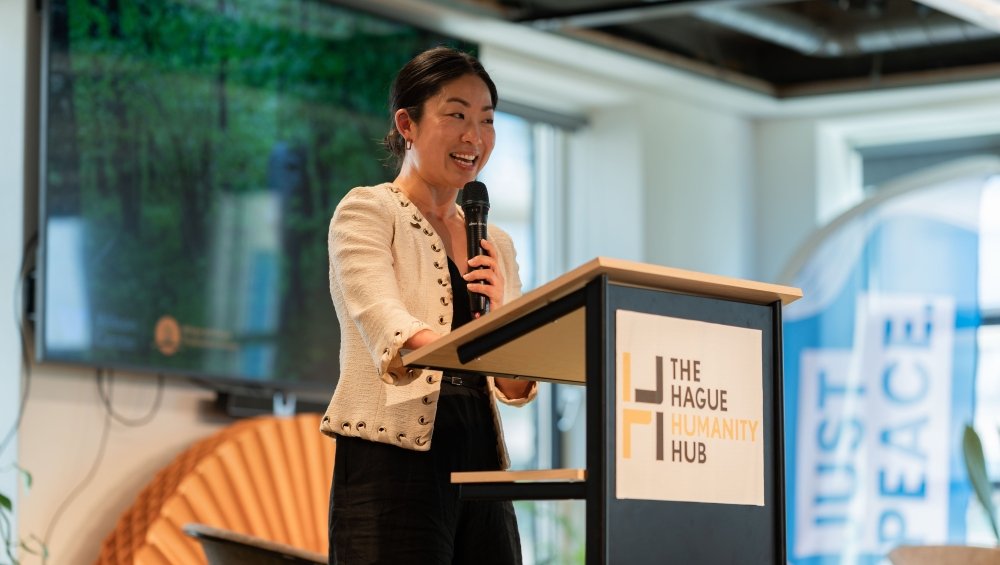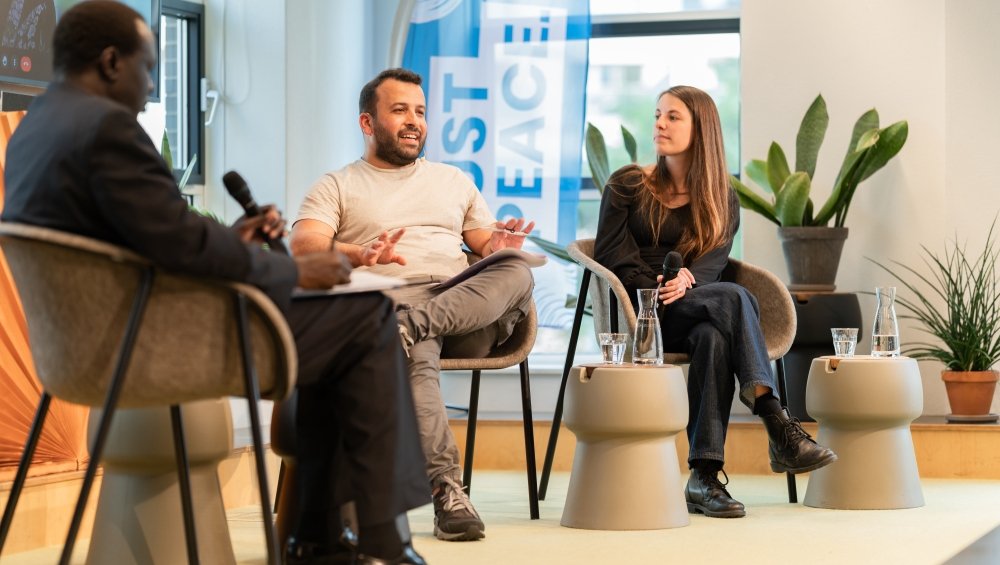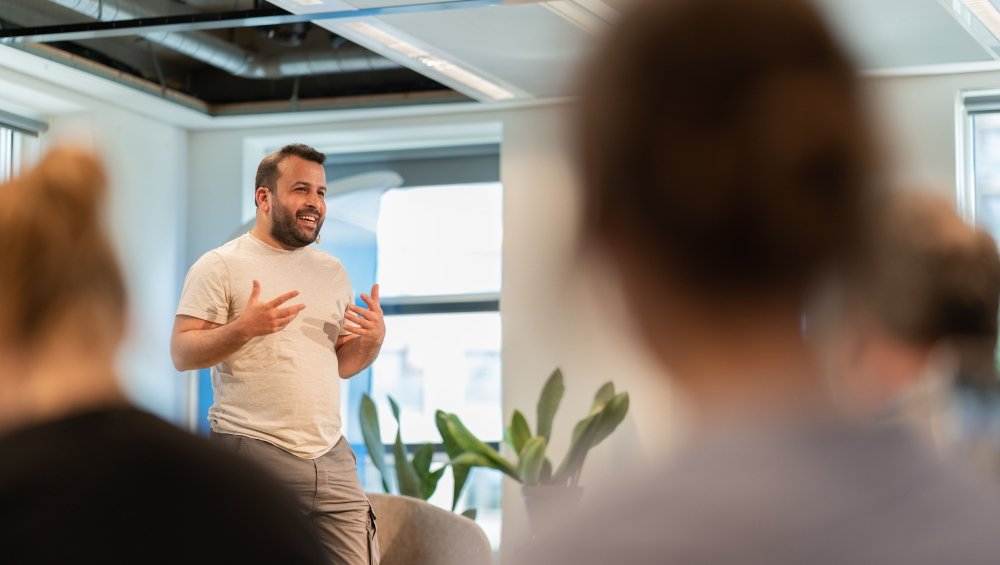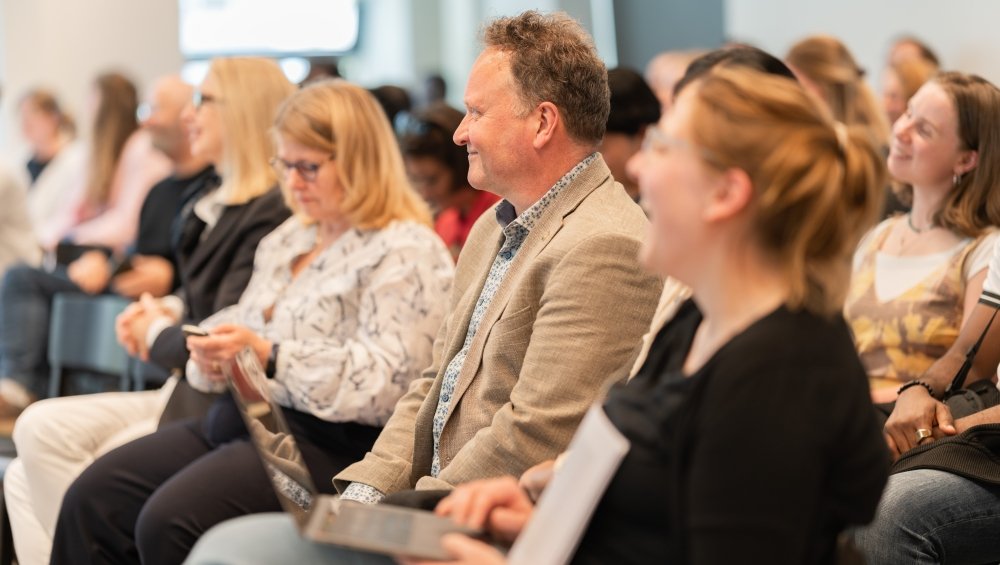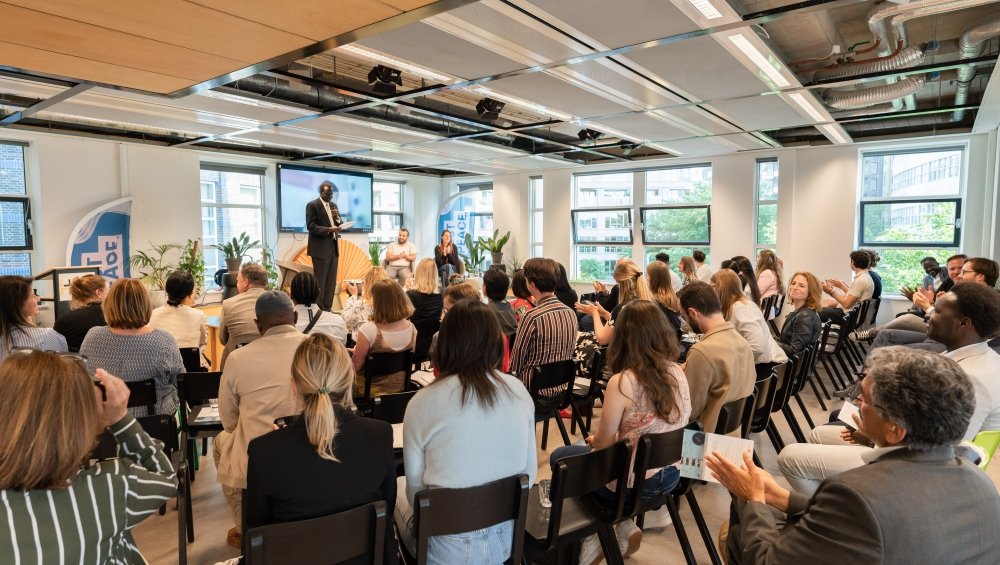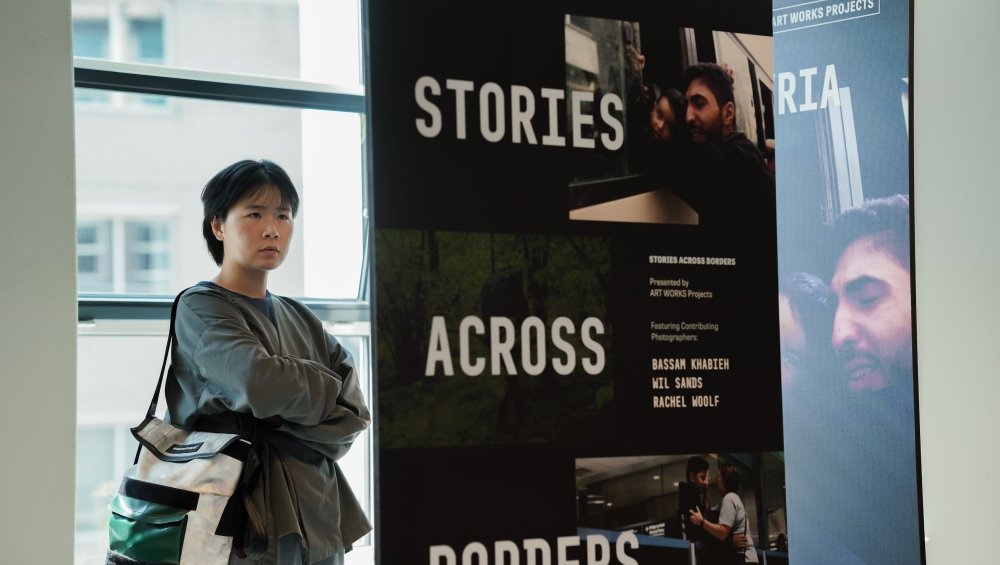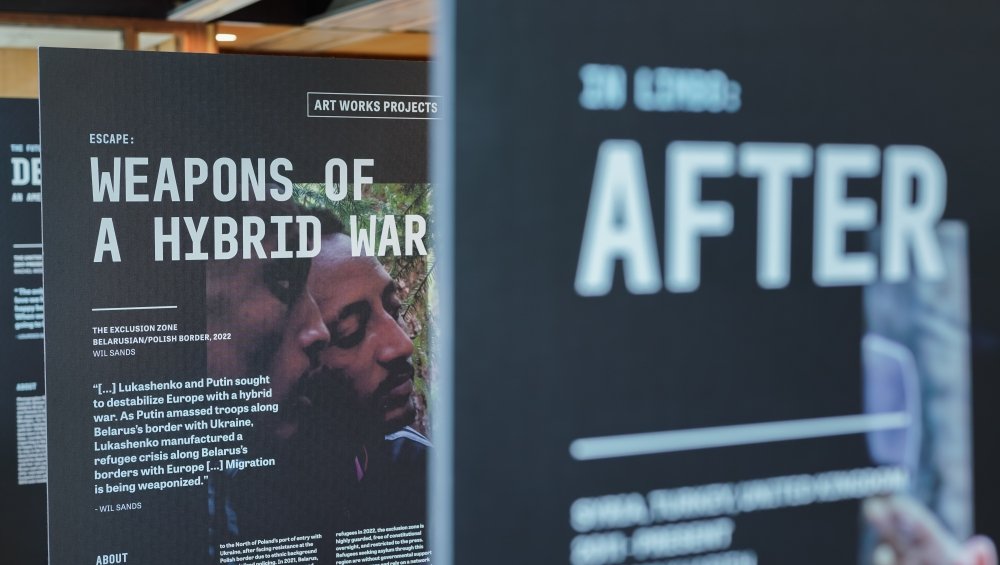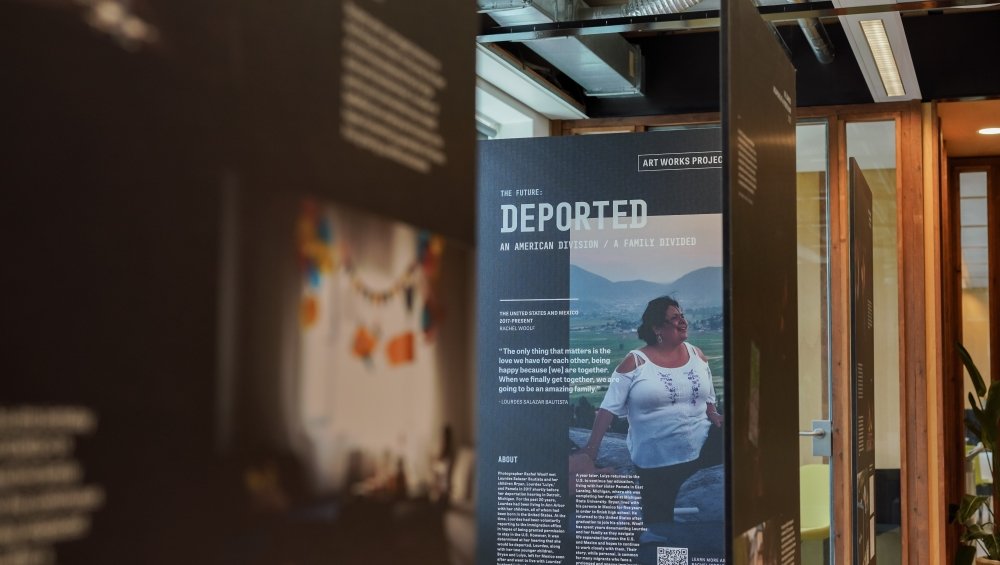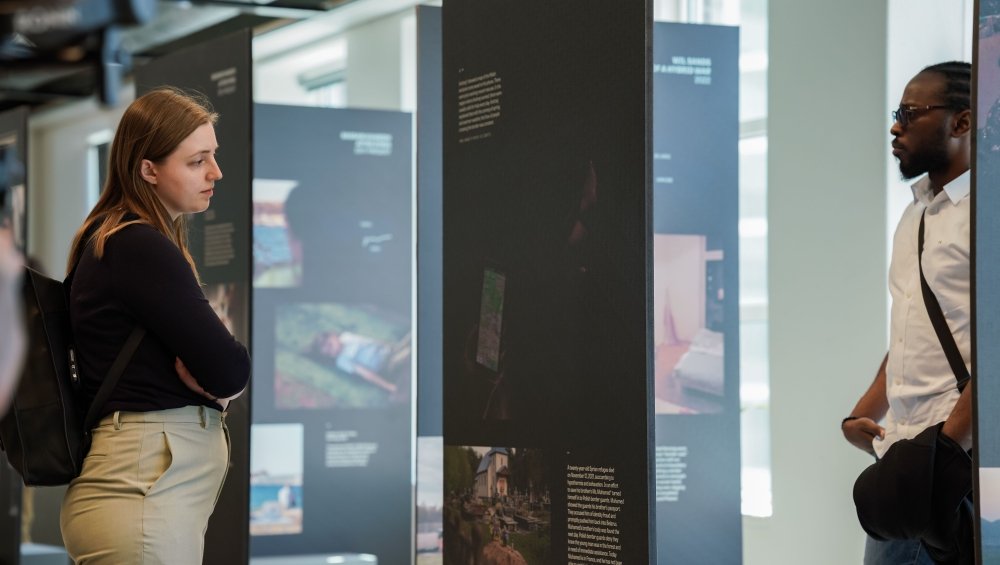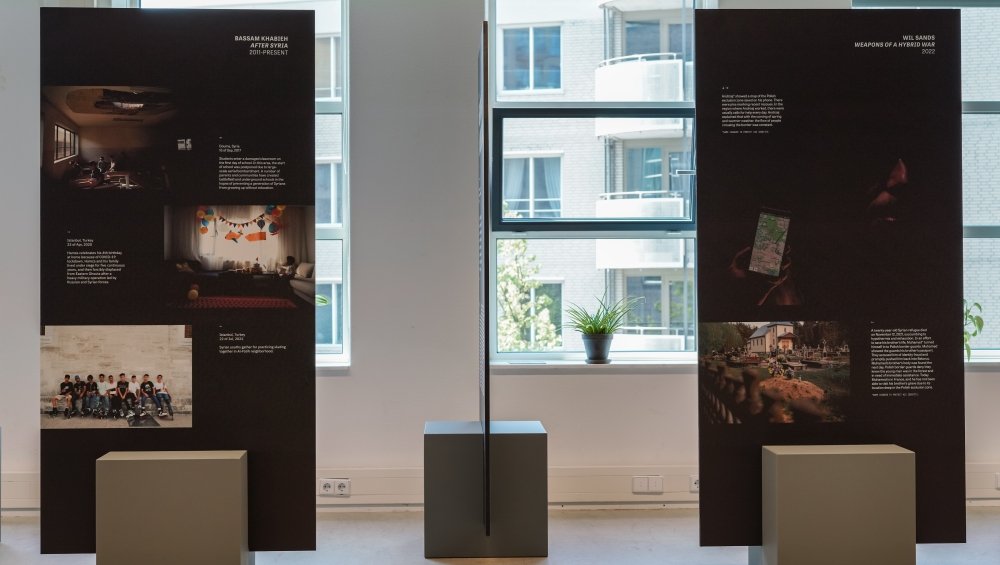Storytelling that Informs Policy: Addressing Forced Displacement and Refugee Challenges
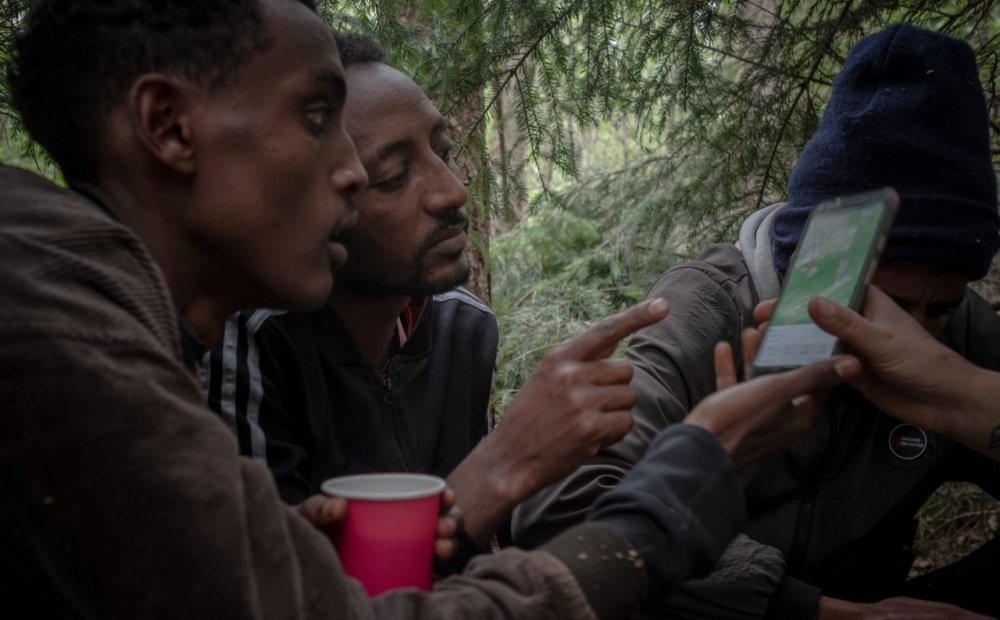
By Joshua Peng and Reesey Du Pont
As forced displacement issues are increasingly viewed through the lens of cycle-based, mainstream media, lived experience stories often go unseen and neglected, forcing refugees and other displaced people to develop their own methods of support, visibility, and influence.
On June 7, 2023, the Refugee and Forced Displacement Initiative (RAFDI) partnered with the ART WORKS Projects (AWP) to host a symposium on “Storytelling that Informs Policy: Addressing Forced Displacement and Refugee Challenges” in The Hague. The symposium aimed to raise awareness about refugee challenges, engage the audience in questions of policy to inform sustainable solutions, and contextualize the complexity of forced displacement through several lenses. The event included two short films, opening remarks, a flash talk, and a panel discussion.
Event Summary
"Everyone has the right to seek safety" were the words that closed out the short opening film produced by AWP. It was also the message with which Bora Un, Managing Director of AWP, began the symposium as she introduced the speakers and themes, noting the significance of June 7th, 2023, as RAFDI’s first anniversary. “Drawing on our shared goals, we have brought together today individuals from across disciplines and sectors to discuss a very global challenge that has local and personal resonance for each of us, focusing on a very people-centered approach to address the global refugee and displacement challenge,” says Un.
Wim Jansen, Director of International Affairs for the City of The Hague, offered a word of welcome while asking the audience to consider the intersections of art and social justice. “Today’s discussion on storytelling in relation to forced displacement and refugee challenges is a timely one…Many of the root causes of migration…are given less attention in the media,” says Jansen. Jill Wilkinson, Managing Director of The Hague Humanity Hub, also welcomed the audience, reflecting on the powerful effects of visual storytelling in the aftermath of the war in Ukraine.
The panel featured Annemieke de Jong, Head of Portfolio Refugee Livelihoods at the IKEA Foundation; Bassam Khabieh, Award-winning photojournalist and refugee; Liselot van Zantvoort, Migration and Human Rights Coordinator at the Justice & Peace Netherlands; and John Thon Majok, Director of the Refugee and Forced Displacement Initiative at the Wilson Center, who moderated the discussion. Speakers explored how visual media, lived experience, and other tools can open up dialogue and inform new perspectives and understanding of the root causes and challenges of forced displacement and where, in the ecosystem, each stakeholder can play a role in identifying new and creative solutions.
While introducing the panel, John Thon Majok asked the audience to consider: To what extent can lived experience shape the narrative about how refugees are presented in media and politics? What refugee challenges are not receiving much attention, and why? What role does visual storytelling play in making refugee challenges more visible to policymakers?
Visual Storytelling and Lived Experience
Visual images bear witness and create profound personal connections, which, in turn, raise awareness about the refugee cause. In the short film introducing the flash talk session, Bassam Khabieh says, “As the violence escalated…it was clear that there was an urgent need for Syrian photographers to ensure that the world know what was happening in our isolated and dangerous homeland.” He continues, “These photos will not bring back the childhoods that have been lost, but war criminals must be held accountable, and these images bear witness.”
Lived experience provides an important context and insights into how the refugees try to make sense of forced displacement that led to their disruptive life. Khabieh shared his experience in his book, Witnesses to War: The Children of Syria, which documents the Syrian war effects that were not covered by mainstream media, and was inspired by his duty to show the world what was happening to his community and people. His asylum-seeking processes color his experience as a photographer - from Syria to Türkiye and again from Türkiye to the UK. This book resulted in “a unique body of evidence on what war means to the youngest members of my community.” It “represents part of our dark history. I want to be sure that nobody forgets what happened during these long years of the ongoing war,” Khabieh says in a video clip.
Drawing from his refugee lived experience, which informs his perspective, John Thon Majok observes, “While stories of lived experience are a window through which policymakers can see the circumstances of refugees, they are often neglected, forcing refugees to develop their own ways of support, visibility, and influence on policy.”
Role of Private Philanthropy in Empowering Refugees and Shaping Narratives
Bringing a critical private sector perspective to the conversation, Annemieke de Jong spoke about the role of philanthropic foundations in empowering refugees and the importance of identifying crucial gaps in refugee funding. With the ongoing shift from humanitarian aid towards human development, de Jong asserted that organizations should prioritize flexible, multi-year, results-based financing. She pointed out how the IKEA Foundation is breaking down barriers to support solutions and scale by de-risking investment for local and national economic actors, which support markets to thrive and become places of jobs and businesses for refugees.
In addition to investing in storytelling and communication initiatives and raising the voices of people impacted by forced displacement, the IKEA Foundation is engaged in refugee livelihoods programming. “Vulnerable communities are absolutely communities worth investing in,” says Annemieke de Jong. She argues that human stories are essential in determining what language to use and in shaping the narrative. Moreover, while policy and data analysis receive the bulk of attention from policymakers, the private sector can fill in the gap left by a lack of storytelling.
Local Solidarity in Tackling Global Refugee Plight
“It's impermissible that people [are] drowning and being pushed back by border police because there's no political will to take in refugees,” says Liselot van Zantvoort. When there is no political will to welcome refugees, where do you ask for the right to asylum? She illustrated how, in the Netherlands, it is particularly difficult for any asylum case to receive approval. This is compounded by inefficiencies in the relationship between the local authorities and the national government when it comes to refugee resettlement. In contrast, van Zantvoort highlighted systems in Canada and Italy where national governments collaborate with cities to establish sustainable refugee resettlement programs.
Van Zantvoort discusses how storytelling can help garner public and local support for the Justice & Peace’s Samen Hier, the first community sponsorship program in the Netherlands to provide safe havens to refugees through safe and legal routes. Drawing from the community-based sponsorship model in Canada and Italy, this initiative depends on the solidarity of local citizens to address the global plight of refugees by welcoming them to build a new life in a new home.
Unseen Challenges Facing Refugees and Asylum Seekers
Drawing from his own experience in refugee camps in Türkiye and the United Kingdom, Bassam Khabieh explained that immobility, lack of employment, and uncertainty over the future leave asylum seekers in a cycle of isolation. “When the asylum seekers feel that they are isolated, their psychological health deteriorates,” says Khabieh. As a result, some may give up the asylum process, which also takes a very long time due to a lack of legal representation and red tape. This inevitably leads to the de-prioritization of these issues in news media and politics.
Refugee storytellers also face a dilemma, as Khabieh explains: “I need to tell the stories of these refugees, but also, I need to protect them. I don’t want the story to cause any harm for them.” For fear of negative repercussions, asylum seekers rarely speak up about their challenges, especially when they feel the system does not protect them. Without effective storytelling and documentation, the unseen challenges of the asylum process will continue to prolong and exacerbate the plight of asylum seekers.
Importance of Storytelling Approach in Refugee Policy
“We need to hear the loudest of people who have been affected by displacement for the programs to work much better,” says Annemieke de Jong. Stories of lived experience provide evidence to help policymakers move and increase their willingness to act in addressing refugee challenges and livelihood issues. Stories inform the research agenda, and when they are heard and shared, they make the policy work a reality as they put human faces behind the numbers. A platform to share stories is also important, de Jong added by giving an example of the Gapminder Foundation’s Dollar Street: a visual tool developed to highlight and share stories and fight misconceptions with a fact-based worldview that everyone can easily understand.
Storytelling generates creativity and encourages audiences to engage in collective problem-solving. Annemieke de Jong said that storytelling is “beyond borders, and of course, it's beyond generations." The collaborative quality of long-form storytelling makes it an invaluable tool for addressing challenges refugees regularly face but are not empowered to resist.
When presented effectively, narratives can refine research questions, establish target audiences, and encourage international actors to espouse holistic approaches. When international advocates listen to the lived experience and expertise of refugees, they become better equipped to help refugees shape their own stories.
Photography, film, and other art forms identify issues that politicians and media companies are not incentivized to address. By creating a framework beyond political and academic discourse, storytelling serves as an essential tool for addressing the forced migration challenges of today.
Event Photos
Introductions


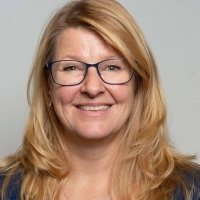
Moderator
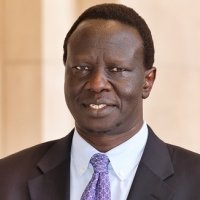
Panelists

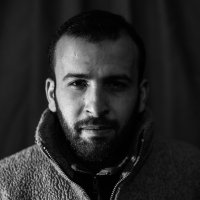

Hosted By

Refugee and Forced Displacement Initiative
The Refugee and Forced Displacement Initiative (RAFDI) provides evidence-based analyses that translate research findings into practice and policy impact. Established in 2022 as a response to an ever-increasing number of people forcibly displaced from their homes by protracted conflicts and persecution, RAFDI aims to expand the space for new perspectives, constructive dialogue and sustainable solutions to inform policies that will improve the future for the displaced people. Read more


